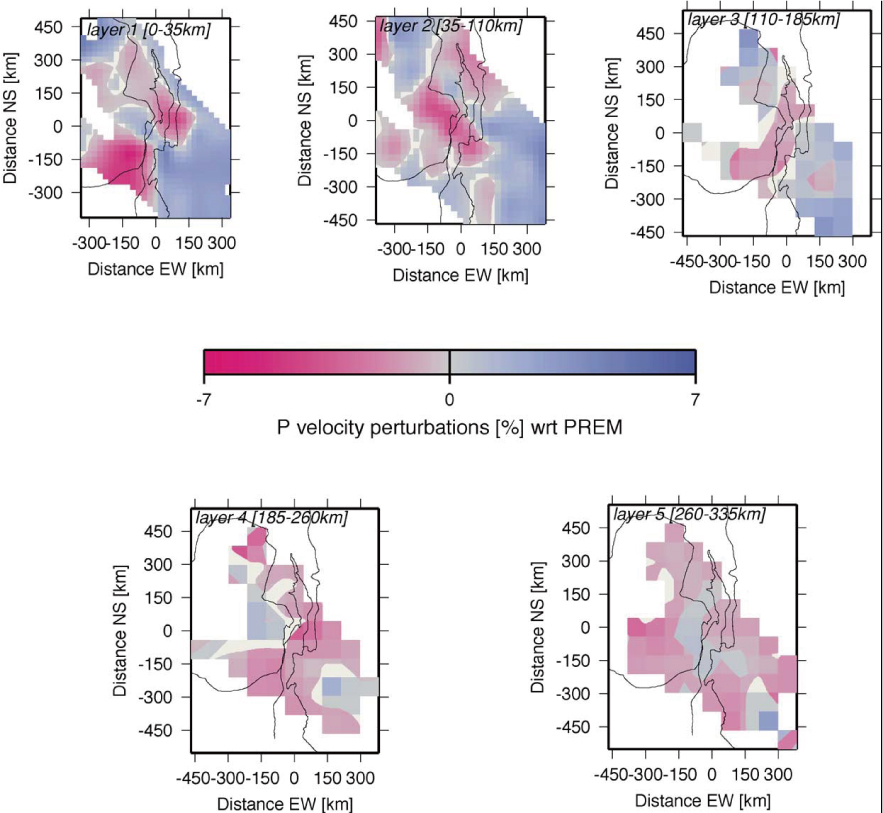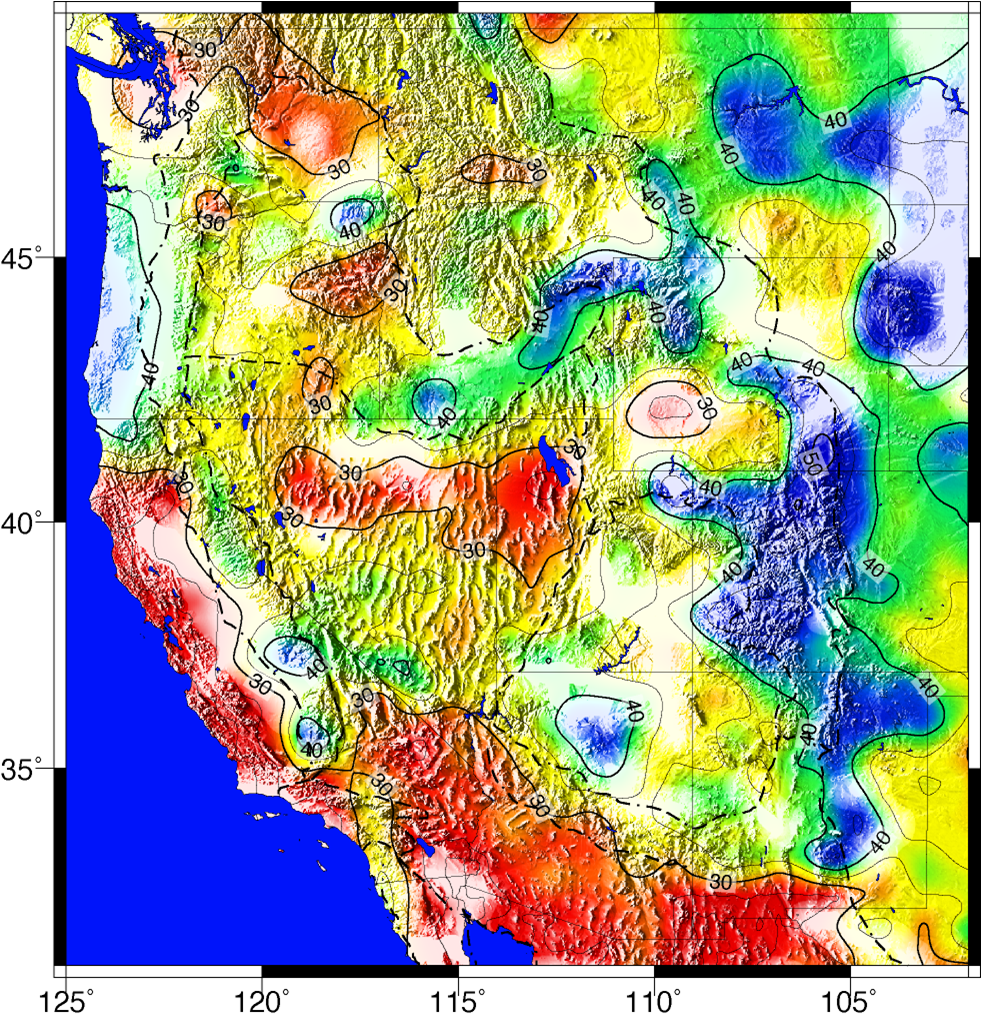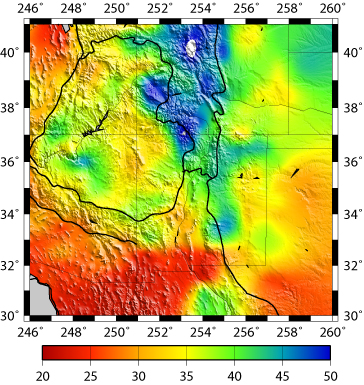Teleseismic Images
This webpage includes receiver function study in this region and P and S models from body wave tomography.

Achauer and Masson (2002) evaluated absolute velocity models from a previous study, and they found that a low velocity anomaly is found in the uppermost mantle underneath the Rio Grande Rift. broadening low anomaly is penetrating the lithosphere to a depth of 350km. Although the low resolution occured in the deepest layer. Because they use teleseismic events, this model suffers from low vertical resolution (Archauer and Masson, 2002) , and as a result it is likely to be smeared vertically, exaggerating the continuity of anomalies and extending them either downward or upward.

Receiver function estimation from La Ristra transection. Crustal P-wave speed for the receiver funcion analysis, and the crustal thickness, P/S ratio are plotted left (Wilson et al. 2004)
Crustal thickness averages about 44 km beneath the Great Plains, and about 45 km beneath the Colorado Plateau. Broadly symmetric crustal thinning is found beneath the Rio Grande Rift, which suggests the lithosphere beneath the rift would be pure shear stretched (Wilson et al, 2005).

A multiple-suppressed image of the velocity discontinuity structure of the sub-crust from the regularized receiver function migration methods is shown below.A prominent northwest-dipping discontinuity and subcrustal discontinuites beneath the Great Plains are consistant with preserved ancient lithosphereic structures. (Wilson et al. 2004)


Also from the USArray TA stations, a 2-D crustal thickness could be determined. Hersh Gilbert performed receiver function analysis tracing the TA stations. Left is the preliminary crustal thickness. Note that a vast region of the Colorado Plateau has high uncertainties of the crustal thickness. Beneath the Great Basin, Crustal thickenning is observed at the western margin with the Rio Grande Rift. Crustal thinning is only observed in the southern Rio Grande Rift. (H Gilbert, 2009)

P and S speed models are built by Gao et al(2004) using data from La Ristra. Back projection tomography of P and S teleseimic delay times are applied to over 50 teleseismic events. Large speed variations are distinguished in the uppermost 200km of the mantle beneath the La Ristra transection, and these variations are suggested to be due to the temperatures variations in the uppermantle.
Slow mantle velocities are found underneath the Rio Grande Rift, the transition zone and the Navajo volcanic field. Slow anomalies beneath the Navajo field and the Jemez lineament are close to Proterozoic boundaries and the slowness is because of tempreture. Also they indicated that the removal of the flat slab of the Farallon subduction would result in the replacement of it with athnosphere. Beneath 200km, seismic anomaly is related to the mantle flow. absense of the low velocity anomaly uncerneath the rift shows no upwelling beneath it. Three features are distinguished: High velocity anomaly at 500km depth under the eastern edge of the Colorado Plateau; low anomaly extending from 500km depth to uppermost mantle is oberved under the region with vocanism from 30Ma. Also high anomaly is observed underneath the Great Plains, showing a sharp boundary with the rift at the southeastern corner of the New Mexico.